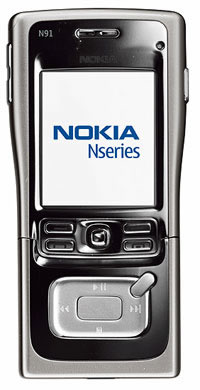 Nokia has launched three new Nseries mobile multimedia handsets, capable of taking print-quality pictures, playing MP3s, reading e-mail, browsing the Web sites and viewing mobile TV.
Nokia has launched three new Nseries mobile multimedia handsets, capable of taking print-quality pictures, playing MP3s, reading e-mail, browsing the Web sites and viewing mobile TV.
They might sound like a collection of night buses, but Nokia’s N90, N91 and N70 phones could represent a major step forward in multimedia mobile convergence.
“This next step in digital convergence brings together mobile devices, Internet content, still and video cameras, music, email and much more. Nokia Nseries devices share similar design traits as mobile phones, but they are actually powerful pocketable computers with a comprehensive set of multimedia features,” said Anssi Vanjoki, Executive Vice President, Multimedia, Nokia.
Nokia N91
The Nokia N91 multimedia handset looks to be facing up to Apple’s iPod, offering a two megapixel camera, Bluetooth and a 4-gigabyte hard disk, (capable of storing up to 3,000 CD-quality songs) inside its natty stainless steel case.
Serving up to 12.5 hours of sound via the included remote-control headset, the Nokia N91 supports a wide range of digital music formats including MP3, M4A, AAC and WMA.
Playback is made easy with dedicated music keys on the phone’s face, which slides down to reveal the phone keypad.
“The Nokia N91 delivers both a fantastic music experience and cutting-edge phone features,” purred Jonas Geust, Vice President, Music at Nokia. “What sets the Nokia N91 apart is the fact that it is always connected – you can download new music while on the move, add it to your favourite playlist and then share your playlist with friends. It’s truly the world’s best mobile connected jukebox.”
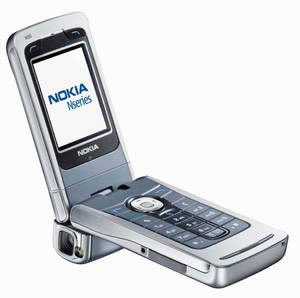 Nokia N90
Nokia N90
The N90 features a twister-tastic, rotating camera barrel which fires up the phone’s 2 megapixel camera (with Carl Zeiss lens), offering autofocus, an integrated flash and 20x digital zoom.
The tri-band phone’s main display has a 352 x 416 pixel screen (262,144 colours), with a secondary 128 x 128 pixels display on the front.
With its pioneering multi-hinge twist-and-shoot design, we have brought ease-of-use and high quality photography into mobile telephony,” enthused Juha Putkiranta, senior vice president of multimedia imaging at Nokia.
Using the main screen as a viewfinder, the N90 can capture high quality video in MP4 format, with a 8x digital zoom.
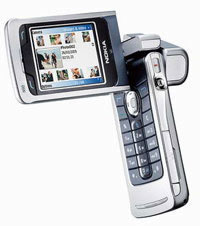 Images, videos and sound can be stored on the phone’s internal 31 MB memory or on the supplied 64 MB RS-MMC
Images, videos and sound can be stored on the phone’s internal 31 MB memory or on the supplied 64 MB RS-MMC
The 3G-enabled N90 is expected to be the first to hit the market this summer, with a suggested retail price for the N90 is €700 (~US$909 ~£474),
Nokia N70
Finally, the 3G-enabled Nokia N70 once again features a 2 megapixel camera, flash and front camera for video calling, with a FM radio, a digital music player and new 3D games.
The camera is activated by a rear sliding cover, with a range of capture scene settings available, including Scenery, Portrait, Night, and Sports.
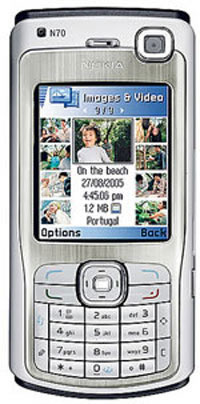 Joe Coles, Director of imaging product marketing at Nokia, stressed the consumer demand for camera-enabled mobiles: “The number one reason why people today purchase new handsets is the camera. Indeed, we foresee that by the end of 2005, over half a billion people worldwide will own a camera phone.”
Joe Coles, Director of imaging product marketing at Nokia, stressed the consumer demand for camera-enabled mobiles: “The number one reason why people today purchase new handsets is the camera. Indeed, we foresee that by the end of 2005, over half a billion people worldwide will own a camera phone.”
Measuring a diminutive 108.8 x 53 x 17.5 mm, the Nokia N70 is the smallest ever 2 megapixel 3G smartphone based on the Series 60 Platform and is expected to be available in the third quarter of 2005.
This new range of innovative phones represent further evidence of the convergence of consumer devices, with mobile phone makers keen to get a lion size bite of the action.
Nokia already claims to the biggest camera vendor in the world, and anticipates that these new phones will help secure its position as the largest seller of portable MP3 players later this year.
Nokia
Samsung’s Hard Drive Phone
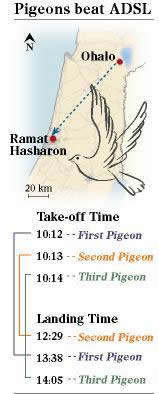 This has Friday Story written all over it. A few Israeli geeks set up a test to compare the speed of delivering data via pigeon (PEI – Pigeon Enabled Internet, as they’ve labelled it) compared with ADSL.
This has Friday Story written all over it. A few Israeli geeks set up a test to compare the speed of delivering data via pigeon (PEI – Pigeon Enabled Internet, as they’ve labelled it) compared with ADSL. 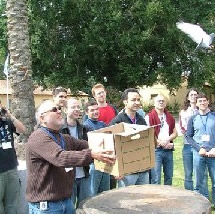 As you know, the A in ADSL stands for Asynchronous, so the transferred rates listed equate to the speed that information is received. Upload rates are significantly lower. By their calculations, uploading 4Gb of data on ADSL would take around 96 hours – making the pigeon transfer significantly more efficient, equivalent to a T1 connection at 1.5Mbps.
As you know, the A in ADSL stands for Asynchronous, so the transferred rates listed equate to the speed that information is received. Upload rates are significantly lower. By their calculations, uploading 4Gb of data on ADSL would take around 96 hours – making the pigeon transfer significantly more efficient, equivalent to a T1 connection at 1.5Mbps.  Chat around the office lead us to wonder what the next in the endless list of variation on creatures being used to transfer information would be. Nicolas Nova has provided the answer – Snail power.
Chat around the office lead us to wonder what the next in the endless list of variation on creatures being used to transfer information would be. Nicolas Nova has provided the answer – Snail power.  Sony have produced a portable games console which on its own merit is going to sell a lot of units. However it has the possibility of becoming a portable media hub that will give even Microsoft a jolt by driving into their Portable Media Center market.
Sony have produced a portable games console which on its own merit is going to sell a lot of units. However it has the possibility of becoming a portable media hub that will give even Microsoft a jolt by driving into their Portable Media Center market.  The system uses Sony’s 1.8″ UMD optical disk which comes in a protective sheath (like a minidisc). They’re small enough so you could easily carry a few around with you (though don’t eject them unless there’s something solid and accessible beneath you as they have a tendency to fly out and disappear somewhere awkward). There’s also a Memory Stick due (32MB supplied) to allow game saves and other features.
The system uses Sony’s 1.8″ UMD optical disk which comes in a protective sheath (like a minidisc). They’re small enough so you could easily carry a few around with you (though don’t eject them unless there’s something solid and accessible beneath you as they have a tendency to fly out and disappear somewhere awkward). There’s also a Memory Stick due (32MB supplied) to allow game saves and other features.  The system looks like a USB memory device when attached to a PC (which basically gives access to the Memory Stick) and you can store audio and video on it. Sensibly, Sony support MP3 directly on the PSP, though it will also support ATRACplus encoded music. Interestingly, if someone decides to produce UMD music disks, they only support ATRACplus and linear PCM). Video is H.264/MPEG-4 AVC on the UMD and MPEG-4 SP, AAC on the memory stick.
The system looks like a USB memory device when attached to a PC (which basically gives access to the Memory Stick) and you can store audio and video on it. Sensibly, Sony support MP3 directly on the PSP, though it will also support ATRACplus encoded music. Interestingly, if someone decides to produce UMD music disks, they only support ATRACplus and linear PCM). Video is H.264/MPEG-4 AVC on the UMD and MPEG-4 SP, AAC on the memory stick. 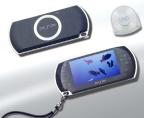 Once the PSP has real Internet capability it will be a media powerhouse, the screen size is about right for watching movies on the go. You could do this now by converting a current MPEG-2 (DVD) to MPEG-4 and storing it on the memory stick (ignoring all legal ramifications), but in future it’s more than likely you’ll be able to stream movies (or audio) directly to the unit. Sony as a music publisher and movie house, is likely to want to sell its content to a market of portable viewers – it owns both ends of the stick.
Once the PSP has real Internet capability it will be a media powerhouse, the screen size is about right for watching movies on the go. You could do this now by converting a current MPEG-2 (DVD) to MPEG-4 and storing it on the memory stick (ignoring all legal ramifications), but in future it’s more than likely you’ll be able to stream movies (or audio) directly to the unit. Sony as a music publisher and movie house, is likely to want to sell its content to a market of portable viewers – it owns both ends of the stick.  The clever-clogs at Toshiba Research Europe have announced that they have been successful in applying quantum cryptography to the transmission of video and voice over IP.
The clever-clogs at Toshiba Research Europe have announced that they have been successful in applying quantum cryptography to the transmission of video and voice over IP.  Toshiba’s quantum video link increases the security of communication systems by encrypting every single video frame with a unique digital key – so cracking one frame of a video would be useless unless all the other frames were cracked too.
Toshiba’s quantum video link increases the security of communication systems by encrypting every single video frame with a unique digital key – so cracking one frame of a video would be useless unless all the other frames were cracked too.  “Imagine if you received a letter, you opened that letter and read it, there is no way of telling if someone has read that letter en route. When you encode the information on single particles, the letter self destructs whenever someone else reads it.”
“Imagine if you received a letter, you opened that letter and read it, there is no way of telling if someone has read that letter en route. When you encode the information on single particles, the letter self destructs whenever someone else reads it.”  As the number of digital TV-enabled households continues to rise and the
As the number of digital TV-enabled households continues to rise and the  The unit’s onscreen interface is simplicity itself, with the eight-day electronic programme guide (EPG) banishing those video timer nightmares forever – this puppy is so simple, even a granny overdosed on Christmas sherry would have no problem setting up a recording of Des and Mel.
The unit’s onscreen interface is simplicity itself, with the eight-day electronic programme guide (EPG) banishing those video timer nightmares forever – this puppy is so simple, even a granny overdosed on Christmas sherry would have no problem setting up a recording of Des and Mel. 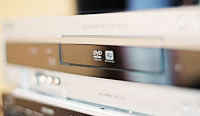 A range of recording quality modes let you increase recording time at the expense of image quality.
A range of recording quality modes let you increase recording time at the expense of image quality. 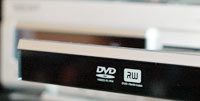 Highly recommended
Highly recommended  The battle between Google and Yahoo continues to heat up, with Yahoo ramping up the feature set of its ‘My Web’ suite of personal search tools.
The battle between Google and Yahoo continues to heat up, with Yahoo ramping up the feature set of its ‘My Web’ suite of personal search tools.  Yahoo claim that their service is “better than bookmarks”, with users able to save an exact copy of a page along with the link, so that saved content will always be there when users return to the page.
Yahoo claim that their service is “better than bookmarks”, with users able to save an exact copy of a page along with the link, so that saved content will always be there when users return to the page.  Yahoo’s search history tool bears more than a passing similarity to the one released by Google last week and reflects the fierce competition between the two companies.
Yahoo’s search history tool bears more than a passing similarity to the one released by Google last week and reflects the fierce competition between the two companies.  BT Rich Media has cuddled up to Sportfive, a French sports marketing group, and announced a partnership to make 2006 Football World Cup qualifying and friendly games available to fans streamed over broadband on the Internet.
BT Rich Media has cuddled up to Sportfive, a French sports marketing group, and announced a partnership to make 2006 Football World Cup qualifying and friendly games available to fans streamed over broadband on the Internet.  Football bonkers viewers will be able to choose between 250Kbps or 500Kbps quality streams for approximately £7 (~US$13 ~€10), or alternatively download the entire match to keep forever for around £5 (~US$9.50 ~€7). As a long suffering Wales fan, I have to admit that there’s several games which I never wish to see again!
Football bonkers viewers will be able to choose between 250Kbps or 500Kbps quality streams for approximately £7 (~US$13 ~€10), or alternatively download the entire match to keep forever for around £5 (~US$9.50 ~€7). As a long suffering Wales fan, I have to admit that there’s several games which I never wish to see again!  The games will be served up on http://www.qualifiers2006.com and promoted to over 10 million users via a range of affiliate sites such as soccernet.com,.teamtalk.com, sportinglife.com and rivals.net .
The games will be served up on http://www.qualifiers2006.com and promoted to over 10 million users via a range of affiliate sites such as soccernet.com,.teamtalk.com, sportinglife.com and rivals.net . 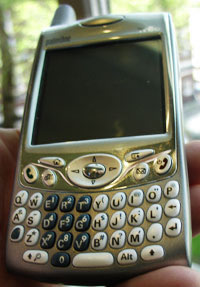 PalmOne has formally launched its Treo 650 in the UK – more than six months after jammy Americans got their mitts on the keenly anticipated smartphone.
PalmOne has formally launched its Treo 650 in the UK – more than six months after jammy Americans got their mitts on the keenly anticipated smartphone.  The handset includes useful quad-band GSM/GPRS connectivity for voice and data, with the bundled VersaMail email application supporting a single Microsoft Exchange Server 2003 ActiveSync account and multiple IMAP and POP accounts.
The handset includes useful quad-band GSM/GPRS connectivity for voice and data, with the bundled VersaMail email application supporting a single Microsoft Exchange Server 2003 ActiveSync account and multiple IMAP and POP accounts. 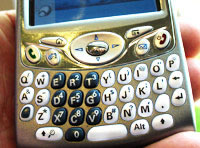 Even with WiFi, Treo users will still be missing out on the killer VoIP application, Skype, so I asked if there were any plans to introduce a version for the Palm platform.
Even with WiFi, Treo users will still be missing out on the killer VoIP application, Skype, so I asked if there were any plans to introduce a version for the Palm platform. 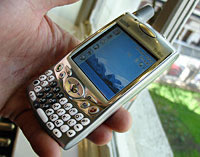 Despite attending an official product launch, I left none the wiser as to when the Treo will actually be available or what other network carriers (apart from Orange) will be offering the phone. Naturally, there wasn’t a peep about pricing plans either.
Despite attending an official product launch, I left none the wiser as to when the Treo will actually be available or what other network carriers (apart from Orange) will be offering the phone. Naturally, there wasn’t a peep about pricing plans either.  Nokia has launched three new Nseries mobile multimedia handsets, capable of taking print-quality pictures, playing MP3s, reading e-mail, browsing the Web sites and viewing mobile TV.
Nokia has launched three new Nseries mobile multimedia handsets, capable of taking print-quality pictures, playing MP3s, reading e-mail, browsing the Web sites and viewing mobile TV.  Nokia N90
Nokia N90  Images, videos and sound can be stored on the phone’s internal 31 MB memory or on the supplied 64 MB RS-MMC
Images, videos and sound can be stored on the phone’s internal 31 MB memory or on the supplied 64 MB RS-MMC  Joe Coles, Director of imaging product marketing at Nokia, stressed the consumer demand for camera-enabled mobiles: “The number one reason why people today purchase new handsets is the camera. Indeed, we foresee that by the end of 2005, over half a billion people worldwide will own a camera phone.”
Joe Coles, Director of imaging product marketing at Nokia, stressed the consumer demand for camera-enabled mobiles: “The number one reason why people today purchase new handsets is the camera. Indeed, we foresee that by the end of 2005, over half a billion people worldwide will own a camera phone.” 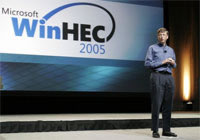 After several years of delays, Microsoft has assured computer-makers that Longhorn, the next version of Windows, is on track for release by the end of next year.
After several years of delays, Microsoft has assured computer-makers that Longhorn, the next version of Windows, is on track for release by the end of next year.  This would offer a built-in method to let users view and print graphical documents, without the need to install the application that created the original file – in other words, a rival to Adobe Systems’ popular PDF technology and PostScript page description language.
This would offer a built-in method to let users view and print graphical documents, without the need to install the application that created the original file – in other words, a rival to Adobe Systems’ popular PDF technology and PostScript page description language. 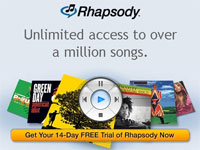 Real Networks is looking to up-end Apple’s iTunes store and nobble Napster To Go by launching a new music subscription services for portables music players.
Real Networks is looking to up-end Apple’s iTunes store and nobble Napster To Go by launching a new music subscription services for portables music players.  Rhapsody 25 is the entry-level standard service which is completely free to use. It’s being supported by advertising, initially Chrysler and is designed to tempt people to subscribe. It allows anyone who downloads Rhapsody’s Windows-based jukebox software to listen to 25 songs for free each month from Rhapsody’s library, with the option to purchase and download songs a la carte. There will also be 25 ad-free radio stations available.
Rhapsody 25 is the entry-level standard service which is completely free to use. It’s being supported by advertising, initially Chrysler and is designed to tempt people to subscribe. It allows anyone who downloads Rhapsody’s Windows-based jukebox software to listen to 25 songs for free each month from Rhapsody’s library, with the option to purchase and download songs a la carte. There will also be 25 ad-free radio stations available.  It’s been likened to having your CD collection on permanent hire purchase – once you lapse on your payments, you can kiss goodbye to your tunes. To old-school music fans, not owning your precious sounds is a bonkers proposition, but both Real and Napster believe there’s a market for subscription-based music downloads, with punters excited by the promise of filling an entire iPod for less than the price of two CDs.
It’s been likened to having your CD collection on permanent hire purchase – once you lapse on your payments, you can kiss goodbye to your tunes. To old-school music fans, not owning your precious sounds is a bonkers proposition, but both Real and Napster believe there’s a market for subscription-based music downloads, with punters excited by the promise of filling an entire iPod for less than the price of two CDs.